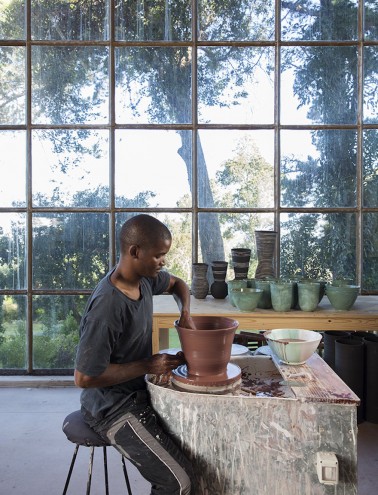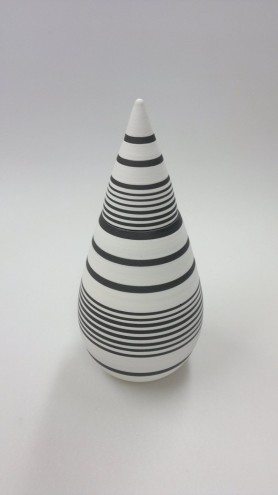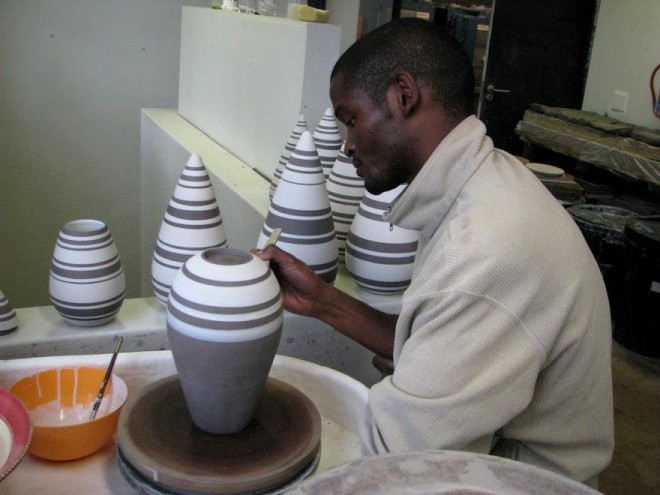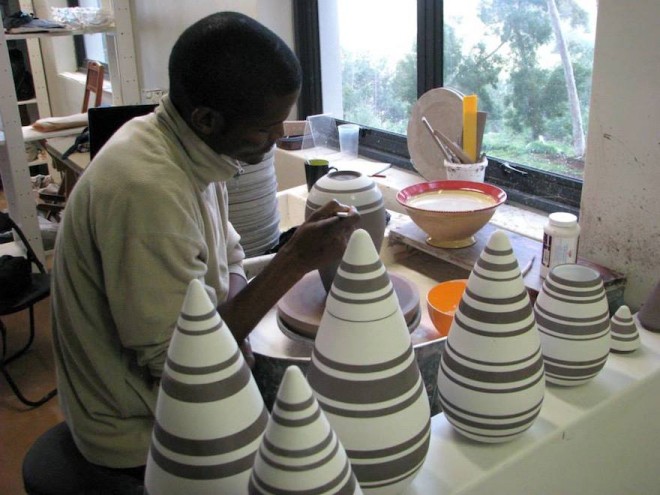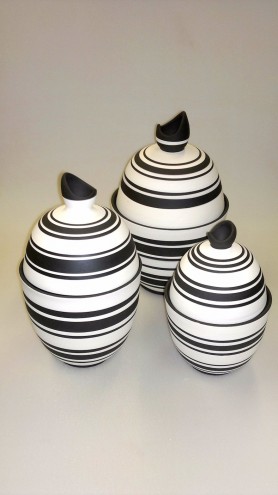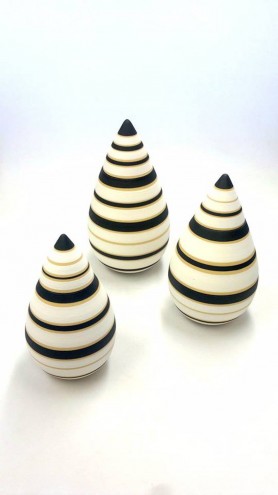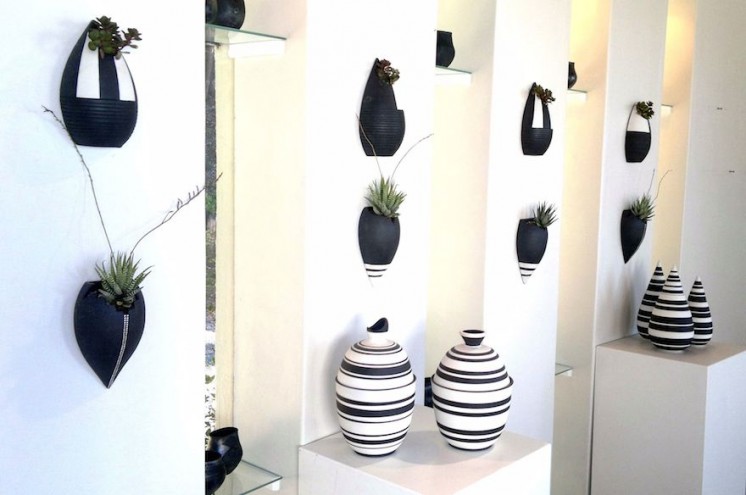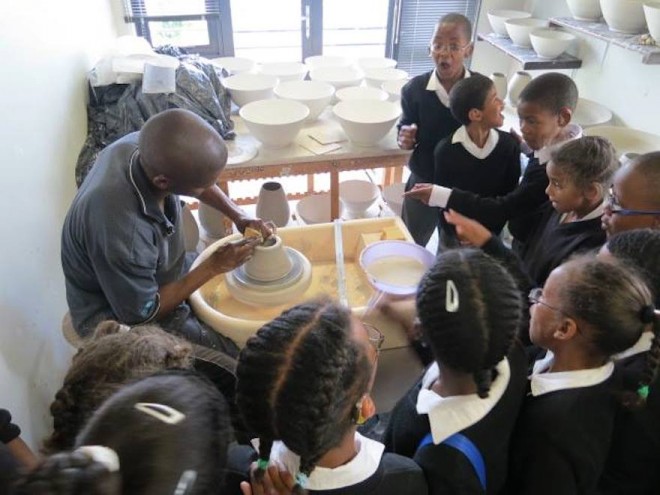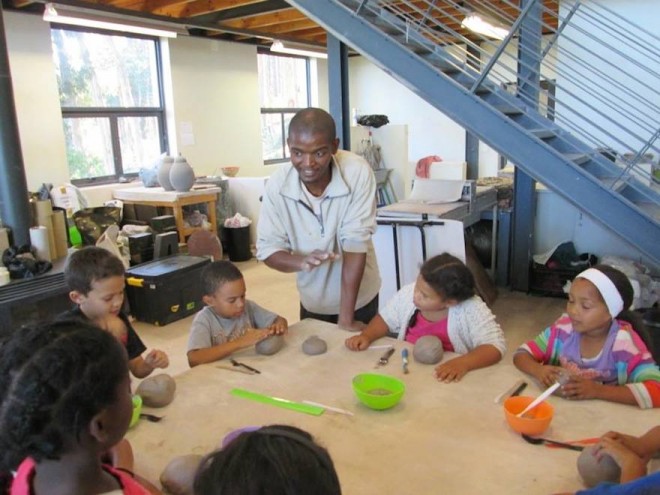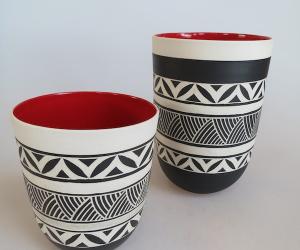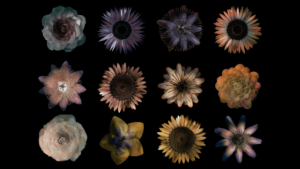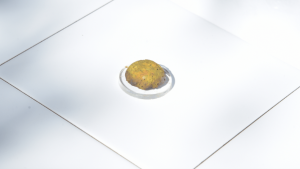Chuma Maweni remembers playing with clay as a child in the Transkei, forming the shapes of rudimentary bulls and cows. He knew he wanted to become a ceramic artist from an early age – a commitment to his craft that has helped him grapple with clay’s unpredictability.
“It’s a playful process, but it is also testing,” says Maweni. “Sometimes I’m sitting at home and an idea will come into my head and I can’t wait to see it done. But that specific design becomes something else while I’m working – sometimes it wants to take its own shape. I love that moment when I’m surprised by what I can do.”
Maweni’s latest work includes monochromatic vessels made up of bands of varying widths: wide-mouthed black urns in pleasing proportions and a striking black-and-white striped range in attenuated conical shapes. They stand out for their technical precision.
They are all made at Art In The Forest, a thriving ceramics centre in the Constantia forest, Cape Town under the mentorship of award-winning ceramicist Anthony Shapiro.
Maweni explains that he enjoys the possibilities that clay offers and the thought that he can take a block of clay and create something ornamental and functional for a home. However, sometimes the clay has a mind of its own.
Work in the studio can be a slow process.
“You have to be patient, especially when you work with wet clay. Coiling can take such a long time, and then it still won’t do what you want it to and it’s frustrating. Sometimes I get to a point where I want to quit this whole bloody thing and go do graphic design. But I have to sit back, calm down, and let it go the way it wants. You guide it, but you have to control your emotions.”
Recently Maweni has been experimenting with naked raku, a method of glazing where sawdust is added to the kiln and the smoke it creates strips the glaze, colouring the bare clay underneath. The process and its resulting smoke patterns are unpredictable.
Maweni studied ceramic design at Nelson Mandela Metropolitan University in 2002. After he finished his degree, he taught women in the rural communities of the Transkei how to work artistically with clay. When he moved to Cape Town in 2006 he got a job with the Light from Africa Foundation at Art in the Forest, where he helps to teach underprivileged children.
“They are reluctant in the beginning; they don’t know what to expect. But we start to show them how to make things, and then they start to really enjoy themselves. Their teachers are always telling me the kids can’t wait to come back.”
Among the children Maweni teaches are classes from the Deaf School for Children in Cape Town. He says he finds a common language in creativity with the students, who range in age from seven to 13.
At Art in the Forest Maweni receives mentorship from older, more established ceramicists, including Anthony Shapiro.
“My experience in ceramics as a whole improved, because I was finally doing what I went to university for. I had a lot of mentorship, enough for me to gain confidence in my products and my designs.”
The mentor-artists at Art in the Forest give him guidance and suggestions that help shape the work he makes. Shapiro influenced the colour scheme of Maweni’s recent teardrop canister pots, which he exhibited at Design Indaba Expo 2015.
“He [Shapiro] likes people’s stuff without many colours, or just with simple colours,” says Maweni. “It was his advice to do the white lines across the pots.”
The striped teardrop canisters are made on a potter’s wheel from black clay, the bodies thrown separately to the lids. The white lines are painted on and the glaze set in a kiln.
“I take inspiration from anything that catches my eye. It might be a natural shape, or the shape of a car! Sometimes I look at other people’s work and reinterpret it to make it my own.
“I hope one day to have my own studio, and to be exporting and exhibiting around South Africa and maybe the world. I made a lot of great new connections at Design Indaba – lots of people said lovely things about my work. And that feels wonderful.”

